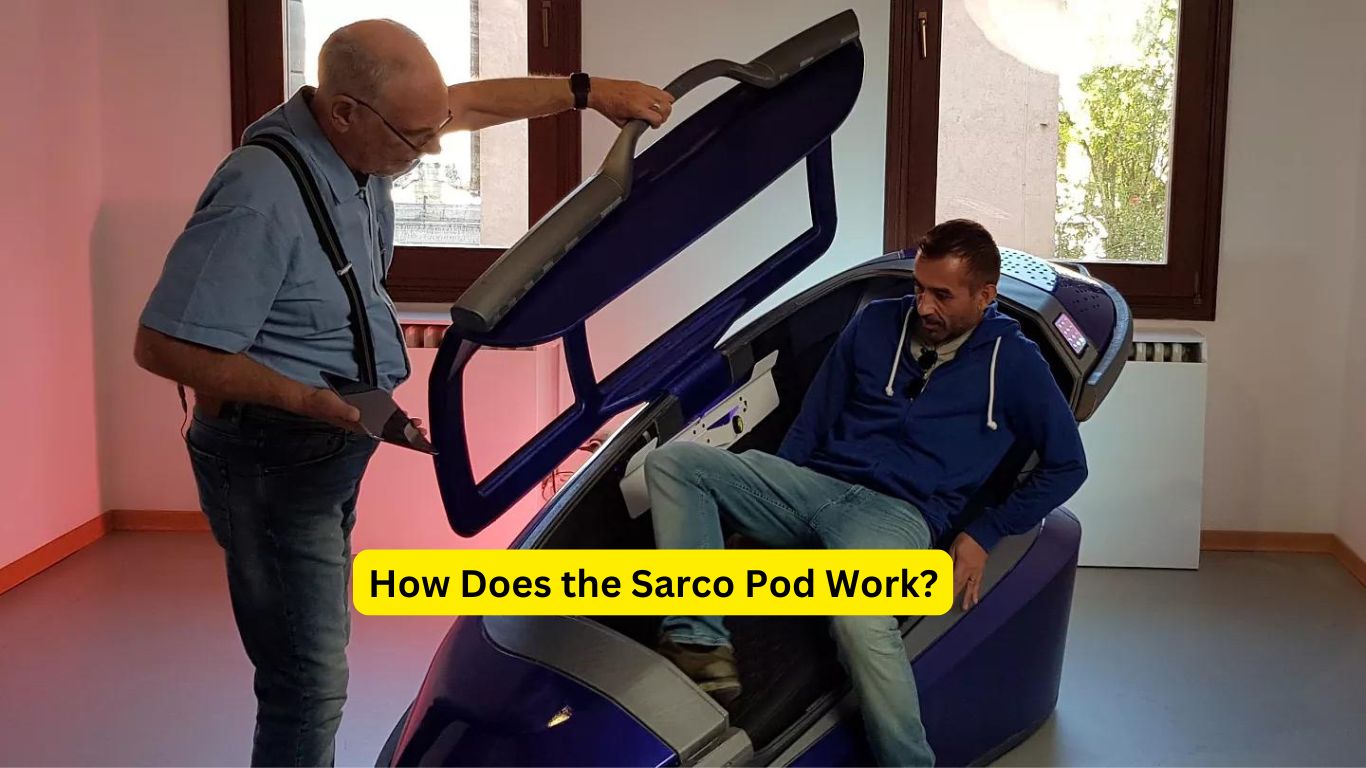1. Understanding the Sarco Pod: A Modern Euthanasia Solution
The Sarco Pod, often referred to as the Suicide Pod, is a groundbreaking device designed for assisted dying. Developed by Dr. Philip Nitschke, a leader in the right-to-die movement, the Sarco Pod aims to provide individuals with a dignified, painless, and autonomous method of ending their lives. In this article, we delve into the mechanics, ethical implications, and legal status of the Sarco Pod, highlighting its potential impact on euthanasia practices worldwide.
2. What is the Sarco Pod?
The Sarco Pod is a 3D-printed capsule that facilitates a peaceful death by inducing a state of hypoxia. By replacing oxygen with nitrogen, it allows individuals to die without pain or awareness, ensuring a dignified exit from life.
2.1 Key Features of the Sarco Pod
- 3D Printing Technology: Makes production more affordable and accessible.
- User-Initiated Control: Empowering users to decide when to end their lives.
- Tranquil Design: The capsule can be placed in serene settings to enhance the experience.
3. How the Sarco Pod Operates: Step-by-Step Process
The operation of the Sarco Pod is straightforward, ensuring that individuals have a seamless experience.
3.1 Step 1: Entering the Sarco Pod
Once the individual enters the capsule, they find it spacious and designed for comfort, minimizing feelings of claustrophobia.
3.2 Step 2: Mental Capacity Assessment
Before proceeding, the individual interacts with an onboard AI system that conducts a series of mental capacity questions. This step ensures the person is making an informed and voluntary decision.
3.3 Step 3: Initiating the Process
After confirming their intent, the individual can press a button to begin the oxygen depletion process.
3.4 Step 4: The Dying Process
As oxygen levels decrease, the user will quickly lose consciousness due to hypoxia, resulting in a peaceful death within minutes.
4. Legal Perspectives on Euthanasia and the Sarco Pod
The legal landscape surrounding assisted suicide and euthanasia varies significantly across the globe. Currently, the Sarco Pod is legal in Switzerland, which is known for its permissive regulations on assisted dying.
4.1 Global Legal Status of Assisted Dying
- Switzerland: Pioneering legislation for assisted suicide.
- United States: Varying laws with some states allowing physician-assisted dying.
- Australia and Canada: Increasing acceptance but facing legal challenges.
5. Ethical Considerations Surrounding the Sarco Pod
The introduction of the Sarco Pod raises several ethical concerns within the realm of euthanasia.
5.1 Arguments Supporting the Sarco Pod
- Personal Autonomy: Advocates argue it empowers individuals to choose their fate.
- Dignified Death: It offers a compassionate option for those enduring unbearable suffering.
5.2 Counterarguments
- Vulnerability Risks: Potential coercion of individuals facing difficult life circumstances.
- Mental Competency Concerns: Questions regarding the reliability of AI assessments for determining mental capacity.
6. Technological Innovations Behind the Sarco Pod
The Sarco Pod’s design incorporates advanced technologies that revolutionize the way we think about euthanasia.
6.1 The Role of 3D Printing
Utilizing 3D printing technology, the Sarco Pod can be produced affordably and efficiently, making it a potentially accessible option for many.
6.2 AI-Assisted Decision Making
The device employs AI to assess mental competency, providing a layer of safety to ensure that only individuals capable of making informed choices can use it.
7. Global Reactions to the Sarco Pod
The Sarco Pod has sparked considerable debate and media coverage since its introduction.
7.1 Public Sentiment
- Support for Individual Choice: Many see it as a step forward in the right-to-die movement.
- Concerns About Ethics: Critics express fears over the implications of such technology for society.
8. Future Implications of the Sarco Pod on Euthanasia
As societies continue to navigate complex ethical, legal, and medical frameworks, the Sarco Pod could play a pivotal role in shaping the future of euthanasia practices.
8.1 Key Takeaways for Euthanasia Advocates
- The Sarco Pod challenges traditional views on death and dying.
- It may influence legislation and public opinion regarding assisted dying.
9. Frequently Asked Questions (FAQ) About the Sarco Pod and Euthanasia
9.1 What is the Sarco Pod used for?
The Sarco Pod is designed for assisted dying, providing a peaceful and pain-free method for individuals to end their lives.
9.2 Is the Sarco Pod legal?
Currently, the Sarco Pod is legal in Switzerland, where laws surrounding assisted suicide are more permissive. Its legality varies by region.
9.3 How does the Sarco Pod work?
The Sarco Pod works by replacing oxygen with nitrogen, inducing hypoxia and leading to unconsciousness and death without pain.
9.4 Who is eligible to use the Sarco Pod?
Individuals who are mentally competent and wish to end their lives can use the Sarco Pod, subject to an AI assessment of their mental capacity.
9.5 Can the Sarco Pod be used for terminally ill patients?
Yes, it is primarily intended for individuals with terminal illnesses or those experiencing unbearable suffering.
9.6 What are the risks associated with the Sarco Pod?
While designed to minimize risks, ethical concerns regarding potential coercion and the reliability of mental capacity assessments exist.
9.7 What is the cost of using the Sarco Pod?
There is currently no definitive pricing for the Sarco Pod, but its design suggests that it may be produced at a lower cost than traditional euthanasia methods.
9.8 Can the Sarco Pod be relocated?
Yes, the Sarco Pod is designed to be mobile, allowing it to be placed in serene environments for a more peaceful experience.
9.9 Is the process reversible?
Once initiated, the process is irreversible. Users can decide whether to proceed before the final activation.
9.10 Are there age restrictions for using the Sarco Pod?
While there are no specific age limits, individuals must demonstrate mental competence and pass an assessment before using the device.
